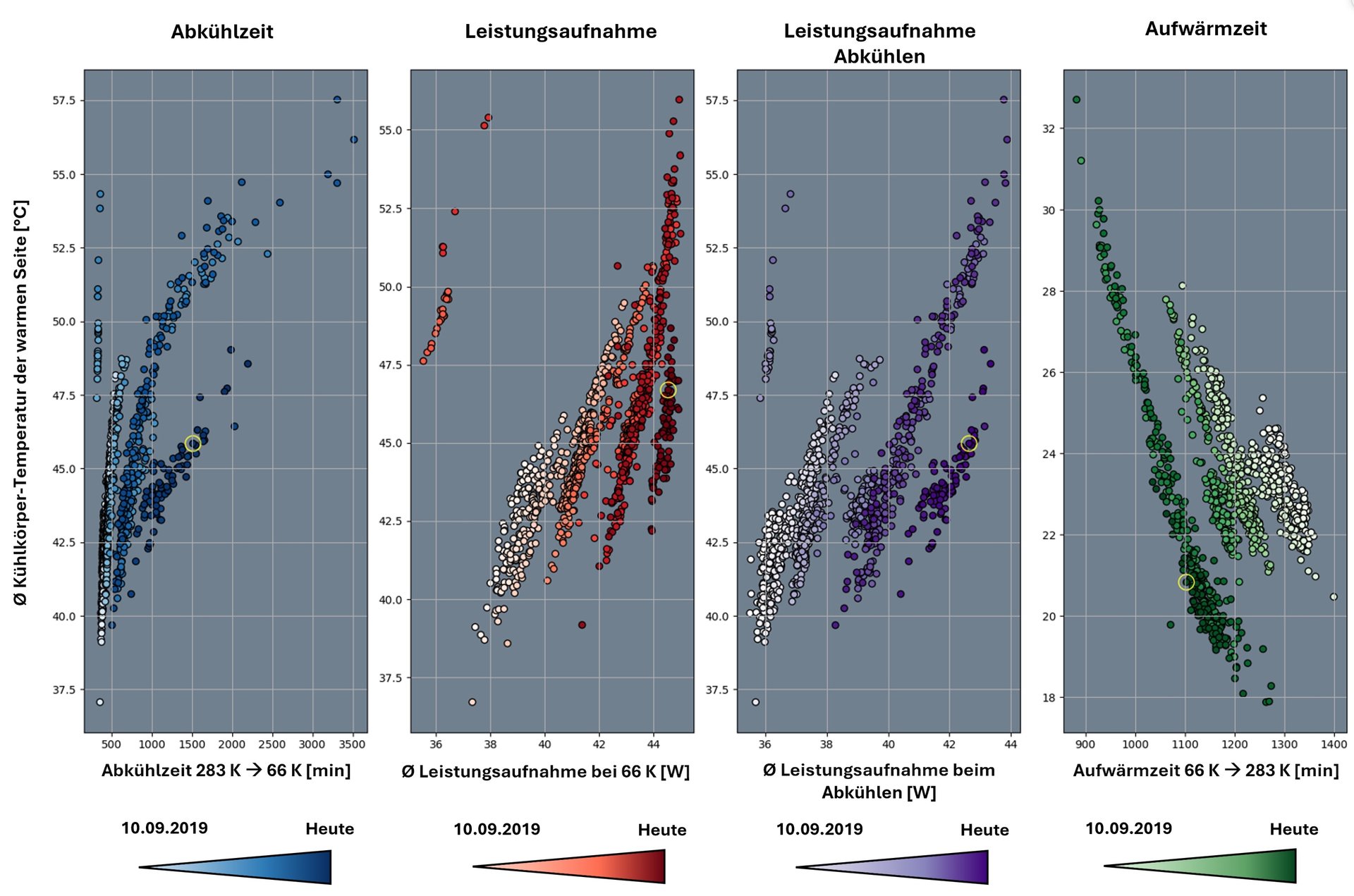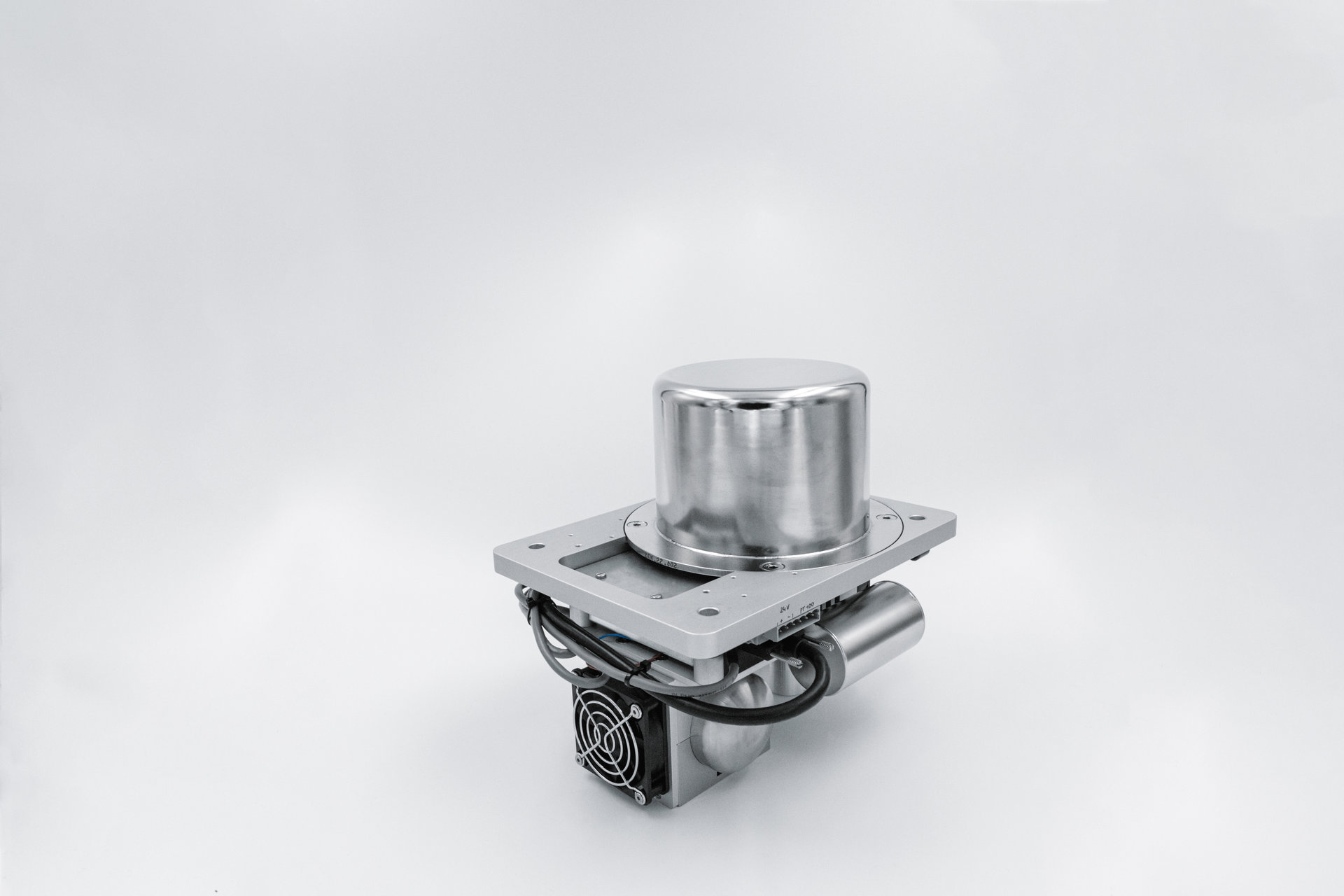Our compact cryostat of the type ZEK DS (cylindrical electric cooling, dual-split cooler), developed jointly with Festo SE & Co. KG was subjected to a long-term test lasting over 5 years by Dr. Uwe Pracht at Festo. For this purpose, the superconductor was cooled down to 66 K in approx. 1000 cycles, held there and then passively warming up to room temperature. For each temperature cycle, the time to reach the target temperature, the power consumption during cooling, the power consumption to maintain the low temperature and the time taken to warm up to room temperature were measured and written in a diagram as a data point against the respective ambient temperature. The ambient temperature was measured at the heat sink via which the waste heat from the cooler is released into the environment. This results in a temperature that is increased by the waste heat from the cooler but correlated with the ambient temperature when the cooler is switched on. The data points recorded first are shown in white, those recorded last in a dark colour.
The diagram shows that the data points are initially arranged close to a rising straight line. As the ambient temperature rises, the efficiency of the chiller decreases and therefore the cooling time increases, the power consumption of the chiller during cooling and the power consumption to maintain the temperature increases. The warm-up time to reach room temperature decreases as the ambient temperature rises. So far, so expected!
Over time, the measuring points move away from this dependency and follow new straight lines. The grouping of the data into separate clouds has its origin in the complex interplay of outgassing and adsorption processes. Much of this is still hidden in the darkness of the UHV chamber, into which we want to shed light with upcoming measurements.
Conclusion: Over the course of 5 years and 1009 cold/hot cycles, the cryostat retains its function, whereby the performance data gradually decreases with the insulation vacuum. The cryocooler shows no wear. The insulation vacuum can be fully restored by activating an integrated getter (by connecting it to a power supply). An annual getter activation is sufficient. A very long service life of several decades can be expected.

